Classic Planning — More Bang for the Urban Buck

Who will you meet?
Cities are innovating, companies are pivoting, and start-ups are growing. Like you, every urban practitioner has a remarkable story of insight and challenge from the past year.
Meet these peers and discuss the future of cities in the new Meeting of the Minds Executive Cohort Program. Replace boring virtual summits with facilitated, online, small-group discussions where you can make real connections with extraordinary, like-minded people.
Since World War Two, urban planning and architecture has destroyed more good, urban fabric than the war itself. Architects, planners, artists, and cultural leaders wholeheartedly believed in “Less Is More”, “Form Follows Function”, “Architecture of Our Times”, and “Progressive Urbanism” as Truth. The world to them was a tabula rasa. They denied the idea of directly applying something that had worked in the past.
Where’s the Baby?
Modern architects and planners insist that developing modern cities and buildings is nothing like what came before. They speak of “FAR” and “density,” of “neighborhoods,” “walkability,” and of “sustainability,” of “Transit Oriented Design,” and lots of bicycles. But even when done to the highest level, none creates as fine an urban experience as what came before.
Purging the profession of previous modes of planning, the baby was thrown out with the bathwater. The drops remaining in the tub were entrusted to urban morticians, a.k.a. “preservationists.”
Self Protection
Nearly all modern plans have failed[1], are currently failing, or will do so in our lifetime. It is clear that modern planning has a fatal flaw.
In an attempt to protect itself from more decimated cities and sprawl, society put in place Zoning, Regulations and Laws of unprecedented volume and complexity. Newer Urbanisms and Leadership programs offer even more codes, and more complexity. The machine now drives itself. Washington DC enacted a new code without the benefit of having designed a plan for it. New Urbanism adds to the code shelf a 600-page “From Based Code”. For substantial additional costs and largely unproven benefit, you can do a Green project.
Amnesia in the Service of Progress
Having, in the name of “progress,” eradicated from the profession the knowledge base of those who came before, planners do not have at their disposal the urban literacy that had evolved over the last 5,000 years. Out of thin air they created solutions to problems that for millennia had been resolved and in doing so created new problems. Where planning failed, the myth of expertise expanded – and the fields of expertise grew increasingly narrow and disjointed.
Today, the greatest team of specialists cannot create as magical an environment as an Italian hilltown or an 18th century downtown. Indeed, specialist segregation of information makes interdisciplinary work difficult if not impossible.
Why Reinvent the Wheel?
For purposes of definition, the classical approach includes all traditional styles of the west and most non-western styles. All emanate fundamentally from classical-type principles.
Like writing and musical notes, classic planning is simple enough to be taught to a child. But without an orchestra knowing to read notes, we would never hear Beethoven.
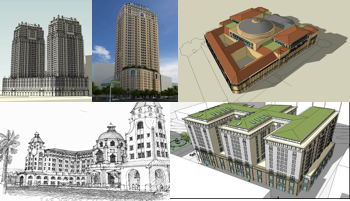
Gateway, Las Vegas, 385 Pennsylvania Ave., Washington DC, Las Vegas City Hall, City Center Hotel, Washington DC
The simplicity of Classic Planning and design is stunning. The full range of its principles can be easily mastered by anyone with a high school physics education. It is based on the universal, intuitive sense of place, a survival tool, and stands on three simple notions:
- Use an utterly simple plan
- Apply traditional architectural styles at least 85% of the time
- Build it right
The Purpose of Urbanism is to Design a Legacy of Beautiful Places
We experience beauty individually, non-intellectually, in a direct linked to individual well-being. Regardless of race, a beautiful individual is beautiful to all. Being universal, the experience of beauty is neither subjective nor dependent on culture.
When unpenalized, people choose beautiful places over others. Beautiful places are therefore functional and economical. People maintain them for generations, which makes them fundamentally sustainable.
Beautiful spaces are beautiful regardless of their date of construction. That we build ugly buildings and spaces expressing “our time” means simply that we consider our time ugly and harsh.
Moreover, users of beautiful places seem generally less prone to aggression and less easy to victimize.[2] This makes such places safer and calming. The well-being they engender encourages tolerance and respect among individuals.
Principles are Values
Being based on the stability of humanistic values, Classic Planning takes, minimally, the 100 year perspective, 500 for infrastructure.
Every place has its spirit and precedents. In Washington DC the Urban DNA is the L’Enfant Plan and the McMillan Commission’s proposals and interpretation of that Plan provide continued guidance to the development of the City.
To withstand the test of time, design at any scale is judged on:
- Firmness — refers to — longevity and sustainability.
- Commodity — refers to — functional flexibility, easy adaptation and regional appropriateness.
- Delight — refers to — timelessness and beauty.
Simple Method
1. Intention.
Decide upon a plan’s motif, theme, or driving design feature. With the least acrobatics go full-tilt on the “main event.” Be consistent thereafter.
2. Invention.
Invention is not creating something from nothing, but rather the application of a precedent from one context to another. By applying a precedent you attain all its inherent holistic values including those that were the motivation for it in the first place. If a precedent works, use it, copy, imitate.
For an urban plan, a precedent operates like a score or script. The notes are the same but a difference in values will create different tones and results.
3. Execution.
Now elevate and detail the fabric in appropriate styles. Adjust the design to the right beauty scale. Use modified traditional infrastructure engineering and construction techniques. Use common sense to judge results. Every aspect must be judged on Firmness, Commodity, Delight. When in doubt, return to the beauty scale.
Urban Design Goals
Every location has its challenges. Goals defined for the Anacostia project in Washington DC included:
- Not to displace a single citizen
- Create socio-economic opportunity
- Fund the project from the development itself
- Create the types of places that make DC unique
- Create center-city resources on a scale hitherto unimaginable
- Be viable from a sustainable, smart, green point of view
Capture the Sense of Place
When it comes to human settlement there aren’t that many choices with regard to its boundaries and approaches. Defining and limiting towns creates “place”.
- Consider land, air and water resources
- Maintain park and agricultural spaces between communities
- Relate to approaches to a place preceding the settlement established there
- Define gateways
Use a Grid
Classic Planning relies on Common-Sense. Cities are the most complex systems but if a plan is overly complex, it won’t work. It is easiest to divide land by using right angles.
- Right-angle construction and planning, matrimony and farming happened roughly at the same time.
- Since 3,000 BC city builders in ancient China, the Indus Valley, Egypt, Greece and Rome; Spanish Colonials and American city builders, Pre-Columbian and Post, all used grids.
- Specific precedents abound for temperate climates. For projects in the Latin context use the Law of the Indies.
- Use principles of City Beautiful and Garden City for tertiary and quaternary quarters.
Roads and Streets
Avoidance of “formality” will not produce the “natural”.
- Remember that orientation and driving are right side of the brain activities
- The brain corrects all intersections for 90 degrees
- Avoid wiggles, angles and meanders
- Plan first for walking, not cars, horses or bicycles
- For roads and blocks a grid is best.
- Lay out reasonable sized blocks
- Reduce street widths to the possible minimum
- Use boulevards for periodic high levels of traffic
- Parking is shared space
- Eliminate all but directional signage
- Plant lots of trees
- Plant lots of trees
- Plant lots of trees
I think you get the drift.
Infrastructure
If boulevards are the city’s arteries and streets its blood vessels, transportation systems, water, power, sewer, and data are the city’s digestive and nervous systems. There is no civic life whatsoever if they don’t operate well and have capacity for radical change in the long run. Oversize everything and build it right. Repair local infrastructure including sewer and water lines for the next 100 years’ service.
Create Real Places
- Consider institutions rather than functions
- Commerce typically relies on its own place-making character to situate itself.
- Locate buildings by their civic or community importance for scaled civic, educational, recreation, shopping, and religious institutions.
- Scale centers and entire neighborhoods to sustain the settlement around them. Perception sets limits as to how large something can be before we feel discomfort.
- Social spaces, recreation and entertainment facilities and elements serving special populations will organically emerge in their place.
Minimize Red Tape
Classic Planning focuses on the essence of place and design, based on a regulatory framework that supports opportunities for real place making. Minimize the planning office. Minimize by-laws, zoning and regulations. Spend money on bricks, not bureaucrats.
- Aside from major (“landmark”) buildings, “use” is ephemeral and zoning is not required. A Classic Plan and Code is 1-2 pages long.
- Think before committing to Smart Codes, Form Based Codes, and LEED certification. They are too complex and not proven to be cost-effective in the long run.
Leverage Government and NGOs; Implement Change
- Study existing regulations and thoroughfare networks and government agencies, how they associate and the funding opportunities they provide
- Make alliances with the private sector, advocacy groups and not-for-profits
- Educate people so they will understand what they are doing.
- Use social marketing and involve people in the vision, maintaining their enthusiasm for execution.
Durability
- Build infrastructure for 500 years. Space for power, communication and data should be allocated for the next 100 years’ service to support flexibility in employment.
- Design buildings for 100 years minimum, houses for 50. Remember: density = sustainability
- Naturally, incorporate energy conservation and alternatives to scarce or expensive resources
Richness in Simplicity
Perception-based Classic Planning serves universal, common, instinctive, human experience. The available richness of forms is immense.
- The creation of urban form is dependent on the architecture of the buildings.
- There is no good urbanism without good architecture
- Classical and traditional buildings are universally preferred as making the best streets and places
- Human well-being requires that 80%-85% of buildings are in traditional styles.
Cost or Benefit?
You can be “cool” and accept glamorous, “high-tech” walls of sterile glass along barren, unused sidewalks. You can accept ridiculously wide roads and being dependent on cars as natural, inevitable even desirable. Or you can understand that the way humans feel and behave hasn’t changed much over time.
Do you want to make a difference in your community or do you want more bureaucracy, codes and failure? Classic Planning methods
- Enable functional flexibility and predicting use and experience outcomes within 10%.
- Reduce requirements for environmental and infrastructural systems
- Increase the utility and profit in buildings, plans and developments
- Enhance individual performance at work, business, or leisure
- Offer 100 to 500 year sustainability at costs equal to or less than conventional construction.
[1] See: Seeing like a State : How Certain Schemes to Improve the Human Condition Have Failed / James C. Scott , Yale University Press, 1999. Also: Urban Planning Dream or Nightmare?; Four Failed Modern Urban Planning Designs; Brasília And Chandigarh: Symbols Of Modernist Hope And Failure; Pruitt–Igoe; and Retro-Futurism: 13 Failed Urban Design Ideas & Concepts
[2] It was crime in modern housing projects, that led Oscar Newman to publish Defensible Space – Crime Prevention through Urban Design, Macmillan, New York, 1972.
Discussion
Leave your comment below, or reply to others.
Please note that this comment section is for thoughtful, on-topic discussions. Admin approval is required for all comments. Your comment may be edited if it contains grammatical errors. Low effort, self-promotional, or impolite comments will be deleted.
Read more from MeetingoftheMinds.org
Spotlighting innovations in urban sustainability and connected technology
Middle-Mile Networks: The Middleman of Internet Connectivity
The development of public, open-access middle mile infrastructure can expand internet networks closer to unserved and underserved communities while offering equal opportunity for ISPs to link cost effectively to last mile infrastructure. This strategy would connect more Americans to high-speed internet while also driving down prices by increasing competition among local ISPs.
In addition to potentially helping narrow the digital divide, middle mile infrastructure would also provide backup options for networks if one connection pathway fails, and it would help support regional economic development by connecting businesses.
Wildfire Risk Reduction: Connecting the Dots
One of the most visceral manifestations of the combined problems of urbanization and climate change are the enormous wildfires that engulf areas of the American West. Fire behavior itself is now changing. Over 120 years of well-intentioned fire suppression have created huge reserves of fuel which, when combined with warmer temperatures and drought-dried landscapes, create unstoppable fires that spread with extreme speed, jump fire-breaks, level entire towns, take lives and destroy hundreds of thousands of acres, even in landscapes that are conditioned to employ fire as part of their reproductive cycle.
ARISE-US recently held a very successful symposium, “Wildfire Risk Reduction – Connecting the Dots” for wildfire stakeholders – insurers, US Forest Service, engineers, fire awareness NGOs and others – to discuss the issues and their possible solutions. This article sets out some of the major points to emerge.
Innovating Our Way Out of Crisis
Whether deep freezes in Texas, wildfires in California, hurricanes along the Gulf Coast, or any other calamity, our innovations today will build the reliable, resilient, equitable, and prosperous grid tomorrow. Innovation, in short, combines the dream of what’s possible with the pragmatism of what’s practical. That’s the big-idea, hard-reality approach that helped transform Texas into the world’s energy powerhouse — from oil and gas to zero-emissions wind, sun, and, soon, geothermal.
It’s time to make the production and consumption of energy faster, smarter, cleaner, more resilient, and more efficient. Business leaders, political leaders, the energy sector, and savvy citizens have the power to put investment and practices in place that support a robust energy innovation ecosystem. So, saddle up.


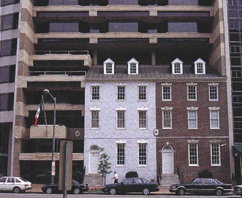

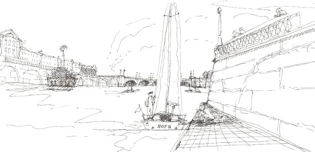

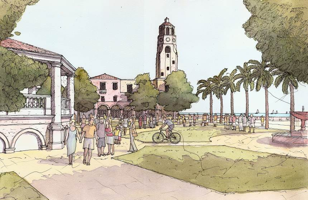




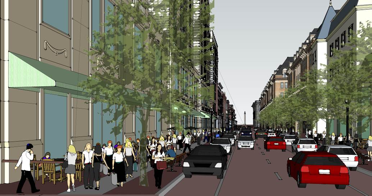
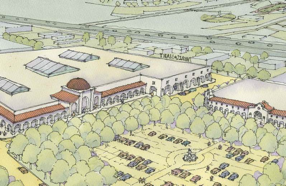

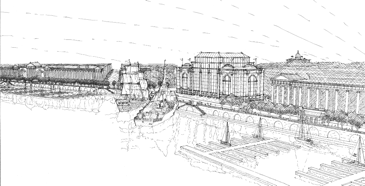
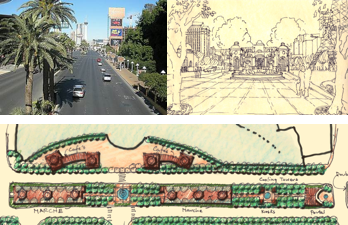



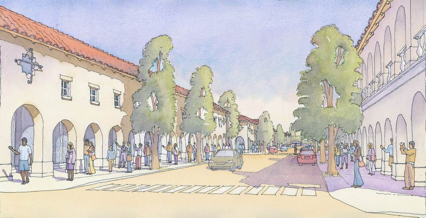





0 Comments